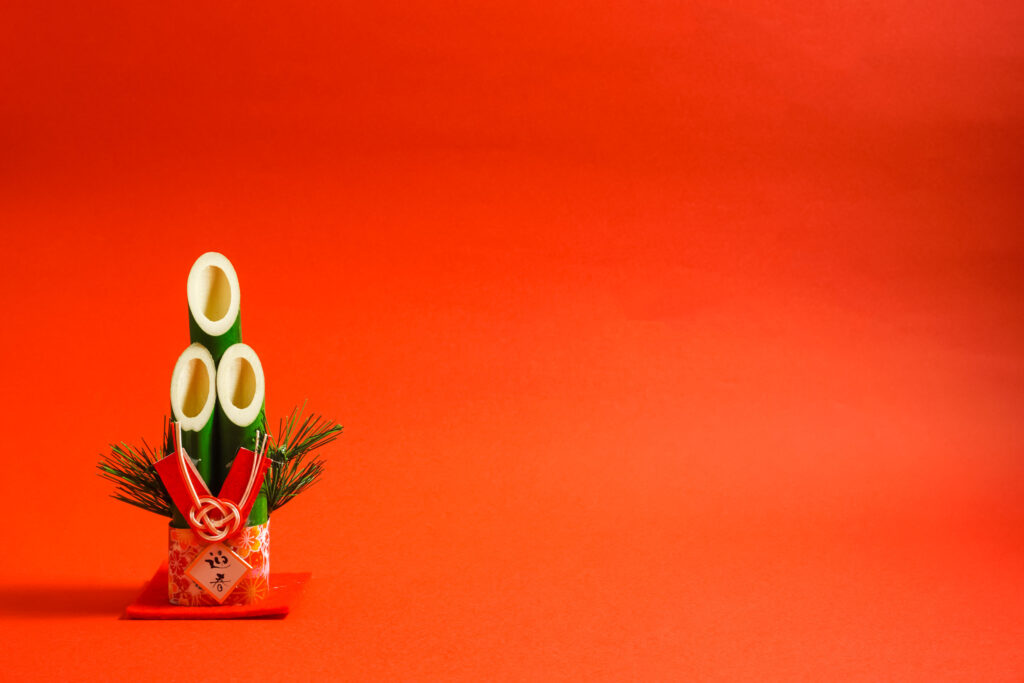The Culture of New Year in Japan

Every year in Japan, people exchange expressions of gratitude for the past year and greetings for the upcoming one during the New Year period. This time of year is an important opportunity to share words of appreciation and prayers for the new year. It is also customary to exchange gifts as a way to convey feelings. This article introduces Japan’s New Year greetings and gift-giving culture, along with how these customs can be utilized in business.
Year-End Gifts: “Oseibo(お歳暮)”
In Japan, there is a tradition of sending year-end gifts called “Oseibo.” These gifts are a way to express gratitude to those who have supported you throughout the year. Traditionally, Oseibo were sent after December 13, but nowadays, to avoid the busyness of the end of the year, they are usually sent from late November to around December 20. Recipients often include friends, family, and business associates.
New Year Gifts: “O-nenga(お年賀)” and “Kanchu-mimai(寒中見舞い)”
At the beginning of the year, gifts known as “O-nenga” are given to convey the sentiment of “Looking forward to another great year together.” O-nenga gifts are typically presented during visits rather than sent by mail. If circumstances require mailing the gift, it is customary to include a prior phone call or a written note to maintain proper etiquette.
The appropriate period for giving O-nenga gifts is from January 1 to the end of “Matsu-no-uchi(松の内).” However, it is considered polite to avoid giving gifts on New Year’s Day itself, starting instead from January 2.
*“Matsu-no-uchi” refers to the period during which New Year’s decorations are displayed. The end of this period varies by region: in Kanto, Tohoku, and Kyushu, it typically ends on January 7, while in Kansai, it may extend until January 15 (also known as “Little New Year”).
The average cost of gifts ranges from 2,000 to 5,000 yen, with popular choices including sweets, alcoholic beverages, and items related to the zodiac of the year.
In cases where greetings could not be delivered in time or when either party is in mourning, it is customary to send “Kanchu-mimai” (mid-winter greetings) instead. These are typically sent after Matsu-no-uchi (January 7 or January 15) and before Risshun (February 4). Popular gifts for Kanchu-mimai are similar to Oseibo, and for greeting cards, it is important to avoid celebratory language for those in mourning.
Leveraging These Customs in Business
Japanese businesspeople often utilize these cultural traditions as part of their sales activities. For example, sending year-end or New Year greetings and gifts to clients with a sense of gratitude can create new business opportunities.
According to a survey by the Research Institute of Economy, Trade, and Industry, utilizing year-end and New Year greetings is considered an “essential” practice by experienced decision-makers in sales. Leveraging these traditions can strengthen trust with clients and lead to sustained partnerships or new business opportunities.
Points to Consider
In recent years, the act of giving gifts has sometimes been regarded as a compliance issue. Many large companies prohibit gift exchanges with business partners to ensure fairness. In such cases, it is necessary to adapt, such as offering greetings without gifts.
Additionally, when choosing a gift, it is important to consider the recipient’s preferences and family structure, avoiding items that are overly luxurious or difficult to use. Since there is no expectation of reciprocation for O-nenga, selecting an appropriate gift that does not impose a burden on the recipient is essential.
These unique Japanese customs of New Year greetings and gift-giving offer opportunities to forge new connections and strengthen existing relationships. May these traditions bring fruitful and prosperous relationships to everyone in the year ahead.
